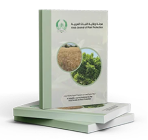A.A. Alhaddad*, I.M. Omran and M. Sabri
Plant Protection Department, Faculty of Agriculture, Basrah University, Iraq.
*Email address of the corresponding author: [email protected]
Received: 4/4/2024; Accepted: 30/6/2024
eSSN 2412-5407
pISSN 0255-982X
مجلة وقاية النبات العربية
Arab Journal of Plant Protection
A Regional Scientific Journal Published Four Times a Year by the Arab Society for Plant Protection
Investigating Some Aflatoxin-Producing Fungi in Wheat Flour and Grains Infested with Trogoderma granarium and its Control with Some Physical Methods
Abstract
This study aimed to isolate, diagnose and biotest some associated fungi with wheat grain that infested with khapra beetle, Trogoderma granarium. 26 isolates of Aspergillus flavus and 10 isolates of Aspergillus ustus were isolated from the flour by direct method. Post the testing by the ammonia vapor method, only five isolates of A. flavus were selected as strong producers for aflatoxin B1. Frequency test of isolated fungi from larvae and adults of T. granarium showed that the highest frequency of Cordycepes pseudollodii was 25 and 23%, respectively. While the lowest frequency of Cladosporium oxisporium was 8.33 and 9.37 % respectively. Obtained results exhibited that C. pseudollodii filtrate caused mortality to larvae of T. granarium at portion 49.11 and for the adults at 29.45 %. We also found that the 1.0 ml of fungal filtrate caused the highest insect mortality rate 56.89%, whereas 0.5 ml of fungal filtrate caused a mortality of 16.67%. Furthermore, in the current study other physical methods were utilized to control T. granarium including ozone gas and microwave radiation. The result displayed that the mortality was 100% for larvae and 96.67% for adults of T. granarium after 10 hours exposure of ozone gas. Likewise, the exposure to microwave radiation for 30 seconds caused the highest mortality rate of 100% for insects that provided with food compared to 72.72 % mortality for insects that were deprived from food, and with higher mortality of adults 89.44 % compared to the larvae 83.23%. Results also showed that the mortality percentage increased in pattern with increasing in the exposure period of microwave radiation which recorded 93.25 and 78.33% for the adults and larvae of insects after three days of treatment respectively.
Keywords:
Wheat, flour, khapra beetle, aflatoxin producing fungi, physical methods, microwave radiation.


 https://doi.org/10.22268/AJPP-001339
https://doi.org/10.22268/AJPP-001339